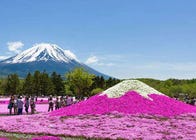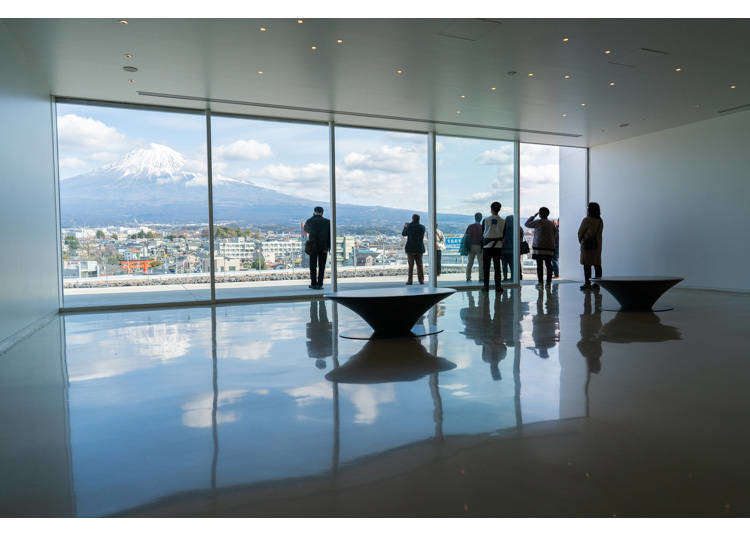
The Mt. Fuji World Heritage Center located in Shizuoka was inaugurated in December 2017 with the purpose of preserving the mountain for posterity and conveying its charms to visitors. The center invites everyone to experience Mt. Fuji through a series of carefully designed visual exhibits. Let's take a closer look at what the center has to offer!
Inside Mt. Fuji World Heritage Center
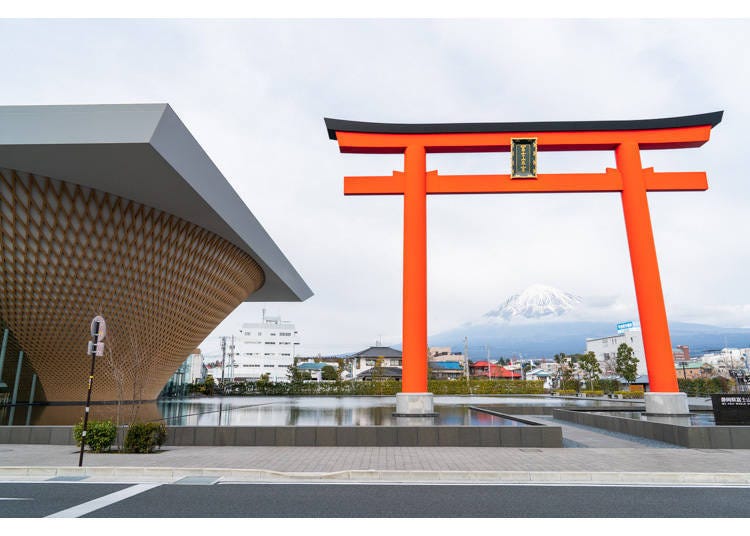
The Mt. Fuji World Heritage Center, located in Fujinomiya City of Shizuoka Prefecture, was opened to the public in December 2017. The center is close to Fujisan Hongū Sengen Taisha, the main temple of the Mt. Fuji faith. It includes a torii (temple gate) connecting it to the temple, and visitors can enjoy a stunning view of Mt. Fuji from this beautiful grand gate.
The main mission of the center is to preserve the World Heritage Site of Mt. Fuji and its cultural significance for future generations. The center's exhibitions and displays are designed based on the four primary principles of protection, transmission, interaction, and research.
To achieve this, specialized researchers in art history, human history, religion, folklore, volcanology, world heritage study, and Japanese literature conduct academic research on Mt. Fuji here.
If you plan to visit, the center is easily accessible from Fujinomiya Station on the JR Minobu Line, just an 8-minute walk away. You can also take a bus from Shin-Fuji Station if you're traveling on the Shinkansen, which will take you to the center in about 45 minutes. This makes it a convenient location to visit from any part of Japan, whether it's Tokyo, Osaka, or any other place.
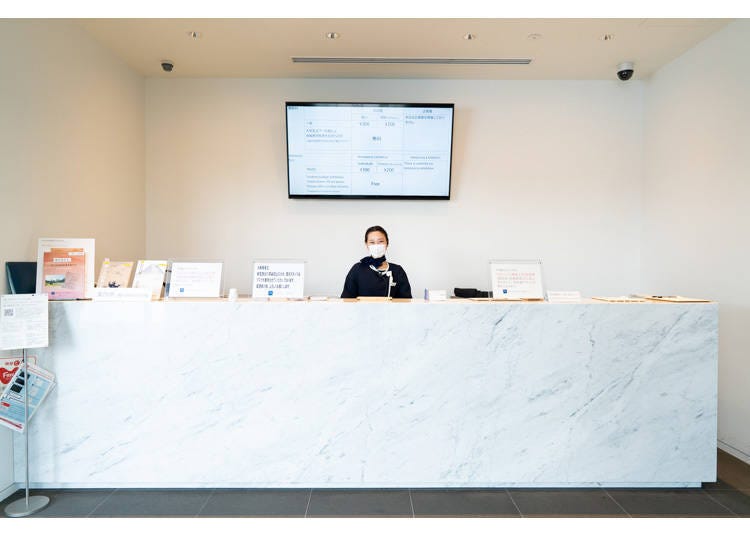
Multilingual exhibits catering to international visitors
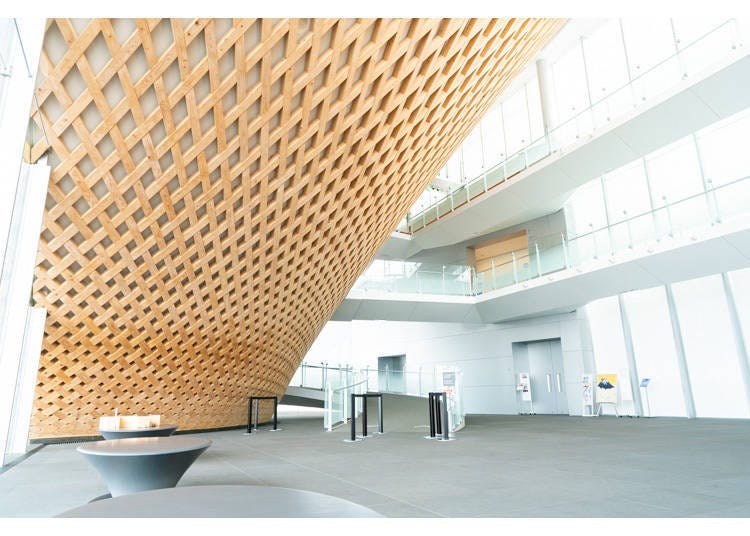
Its most distinctive visual is the exhibit hall's inverted cone-shaped forum, covered all over by wooden grates made of Fuji cypress. The building was deliberately designed this way so that its reflection on the water basin at the entrance would resemble the conical shape of Mt. Fuji itself.
The facility has six permanent exhibits: Ascending Fuji, The Fierce Mountain, The Sacred Mountain, The Beautiful Mountain, The Nurturing Mountain, and The Inherited Mountain.
Temporary exhibits are also set up on a seasonal basis, and there is a film theater that introduces the nature and culture of Mt. Fuji through impressively detailed 4K videos, ensuring that visitors will never run out of things to learn and enjoy at the center.
The pamphlets, audio guides, and explanatory monitors are available in Japanese, English, Mandarin Chinese (Simplified and Traditional), and Korean so that the charms of Mt. Fuji can be expounded clearly and comprehensively to visitors of all nationalities!
(*Chinese-speaking staff work onsite daily. English-speaking staff work onsite on an ad hoc basis.)
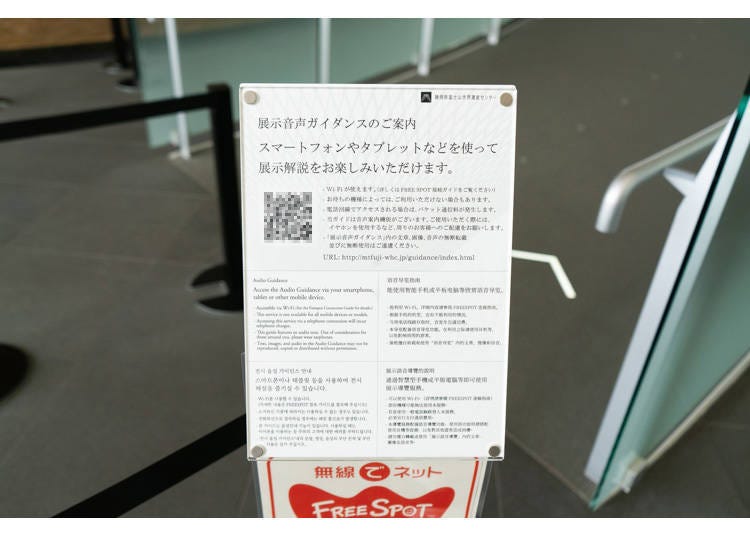
Ascending Fuji: Scaling the famous mountain without stepping foot on it
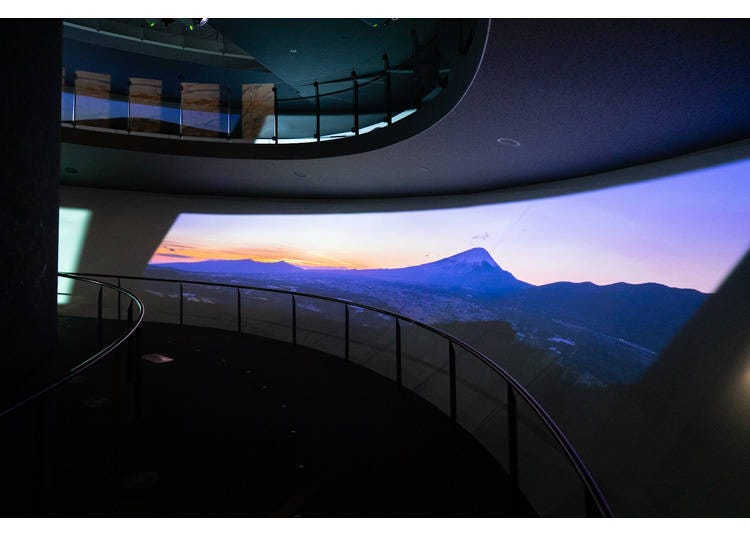
The very first thing you'll see upon entering the exhibit hall is the 193-meter (about 633 feet) long spiral path permanent exhibit known as Ascending Fuji.
Projected on the walls around this path are time-lapse videos of the mountain trail that goes up to Mt. Fuji's summit from the sea of Shizuoka. The path is designed to simulate the Mt. Fuji climbing experience as authentically as possible.
Sounds meant to bring the simulation closer to the actual experience, such as the rustling of leaves, chirping of birds, and the whipping winds near the peak, will be played along with the videos as well. Every step up the sloped path brings about a new change in scenery, be it the sea, a town, lush forests, weathered mountain trails, or finally, the mountain summit itself. All this serves to impress upon visitors the sheer expansiveness of Mt. Fuji.
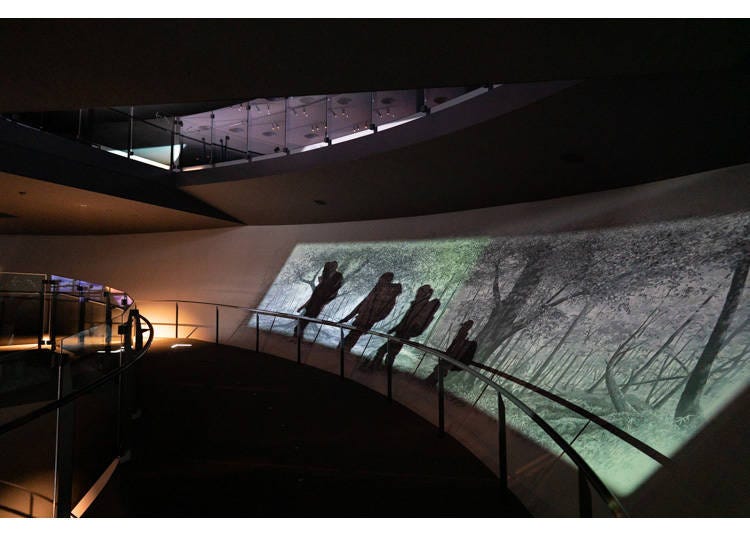
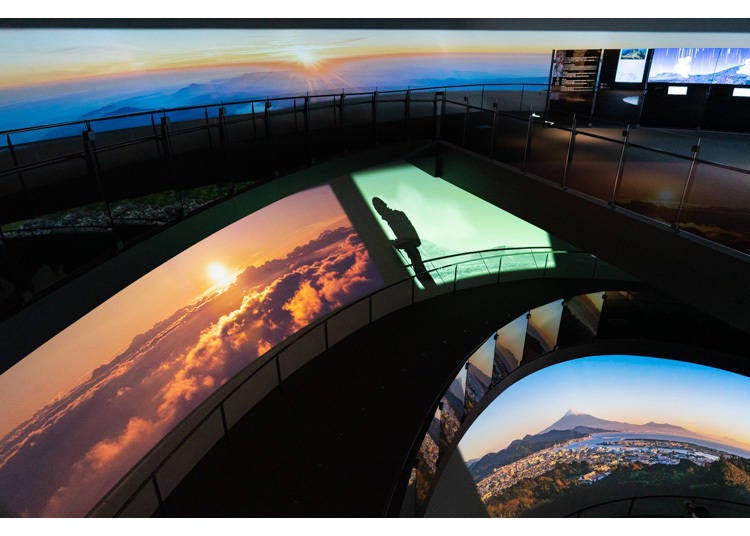
Main Attractions & Exhibits
Observatory Hall: A panoramic view of Mt. Fuji
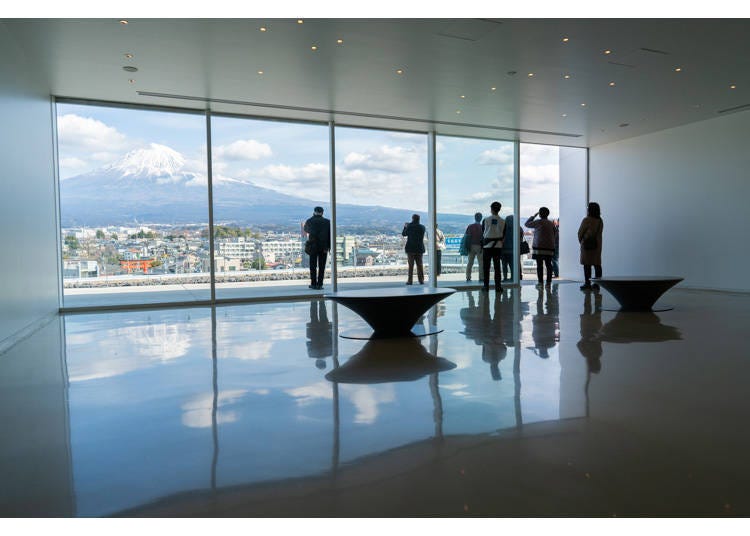
At the end of the spiral slope is the observatory hall, where all visitors will be treated to a spectacular sight that is like no other - a panoramic view of the large and impressive Mt. Fuji surrounded by the spacious and beautiful natural environment at its foot for as far as the eye can see.
The mountain is breathtaking when crowned with pure white snow at its peak from winter to spring. This moving scene makes the trek up the spiral slope worth every step!
At the back of the observatory hall is the exhibit space entitled The Fierce Mountain, and it documents the intense volcanic history of Mt. Fuji that created the plateau forming part of the Japanese archipelago on which the mountain now stands. Various simulated exhibits are available to tell the tale of how Mt. Fuji met the human race.
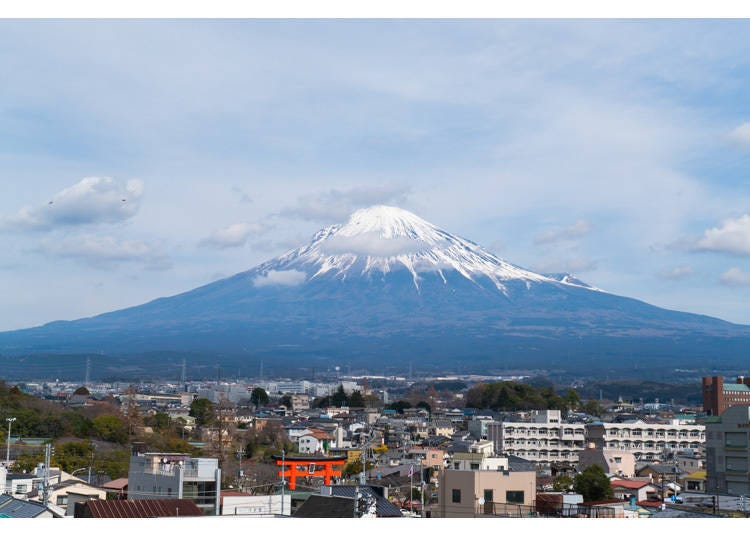
The Sacred Mountain: Learning about the Mt. Fuji faith and its history
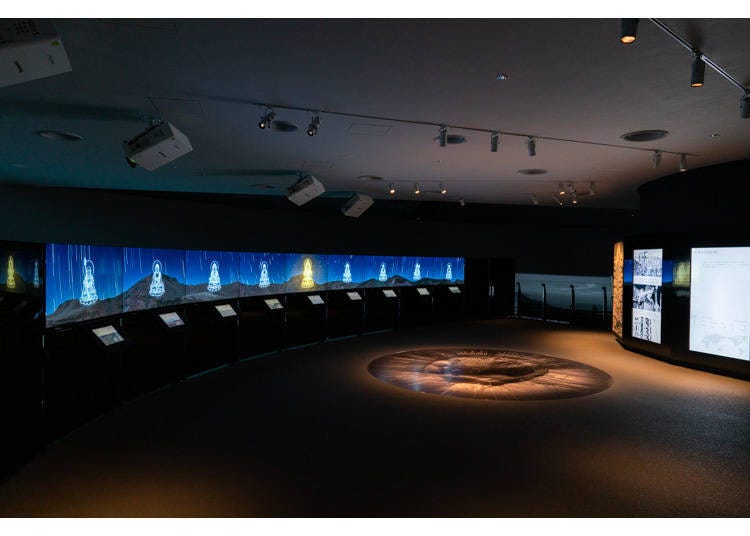
Halfway through the spiral slope is an exhibit space known as The Sacred Mountain that contains records explaining how Mt. Fuji has been viewed as a sacred spiritual site from times past.
You'll learn about the religious faith of Mt. Fuji that came into existence through Japan's long history and how this faith is practiced. Resources such as documents and pictures related to the subject will be on display, and interactive touch panels will be available to help visitors understand the information in easier chunks.
The religion is rooted in the belief that the violent eruptions of Mt. Fuji are expressions of an angry god. Religious rites known as yо̄uhai (distant rites) were performed from a distance to suppress the eruptions.
There are also tо̄uhai (climbing rites), which pilgrims carried out as part of their ascetic training. As a result, many Japanese still view Mt. Fuji as a sacred sanctuary in their hearts today.
At the center of this zone is a terrain map of Mt. Fuji's summit. You'll also be able to go on a quick ohachimeguri (eight pilgrimages) experience. This is a mountain trail that takes you through the eight peaks found on Mt. Fuji's summit.
The Beautiful Mountain: Arts and literature inspired by Mt. Fuji
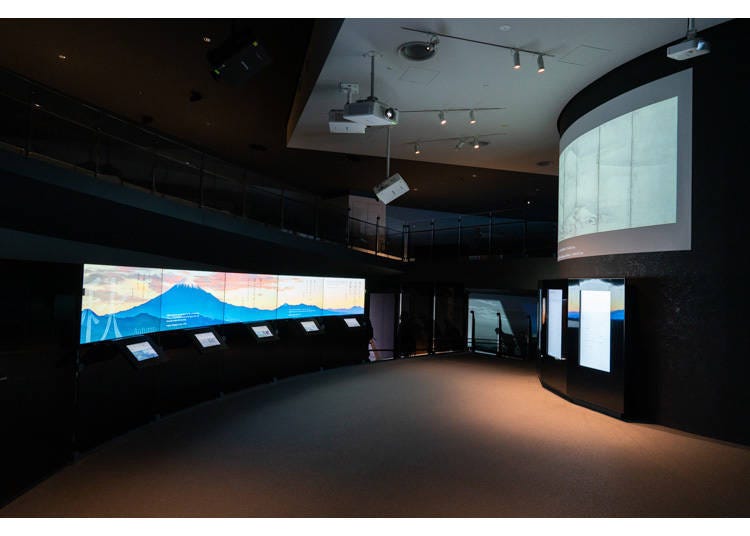
Another exhibit that you'll pass by along the spiral slope is The Beautiful Mountain, and this space introduces you to the artistic side of Mt. Fuji.
The plethora of stories, poetry, and paintings created throughout history that use Mt. Fuji as inspiration is quite frankly mind-boggling, so much so that you would be forgiven for thinking the mountain is the source of all traditional Japanese arts and literature!
From Japanese classics like The Tale of the Bamboo Cutter or The Tales of Ise to well-known modern works by authors such as Sōseki Natsume or Dazai Osamu, you'll see that Mt. Fuji is often featured in these literary heavyweights.
Countless people who have viewed these works inspired by Mt. Fuji throughout times and seasons have been touched by its majesty, even if they may not have come into contact with it directly - a testament to how far-reaching the influence of this iconic mountain has come to be.
The Nurturing Mountain: The natural ecosystem that defines Mt. Fuji
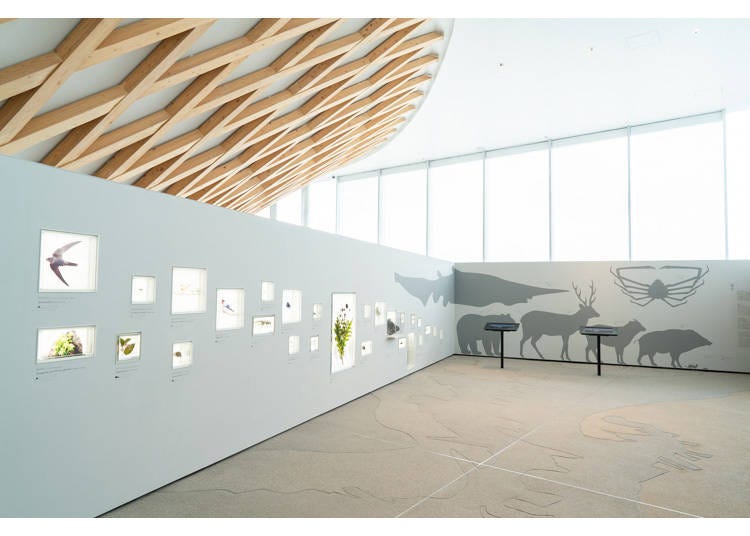
On the hall's third floor is The Nurturing Mountain, an exhibition space that introduces the complex ecosystem that can be found from the bottom of Suruga Bay to the peak of Mt. Fuji. This area encompasses a height difference of 6,000 meters (about 19,685 feet) in all.
The ecosystem in the vicinity of Mt. Fuji is supported by snowmelt or water that bubbles up from under the sea. This exhibit is designed to help visitors get better acquainted with the fish of Suruga Bay in the sea of Shizuoka, the birds and plants found in the alpine region of Mt. Fuji, and all the various flora and fauna in between.
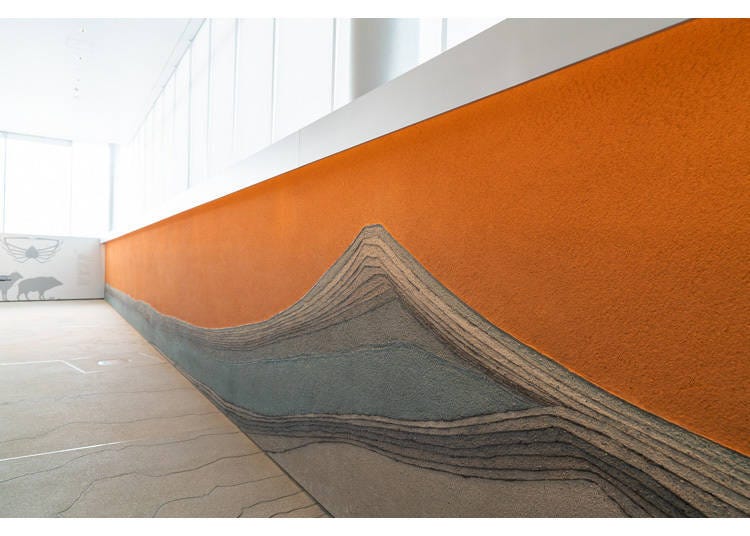
The Inherited Mountain: Walking towards the future with Mt. Fuji
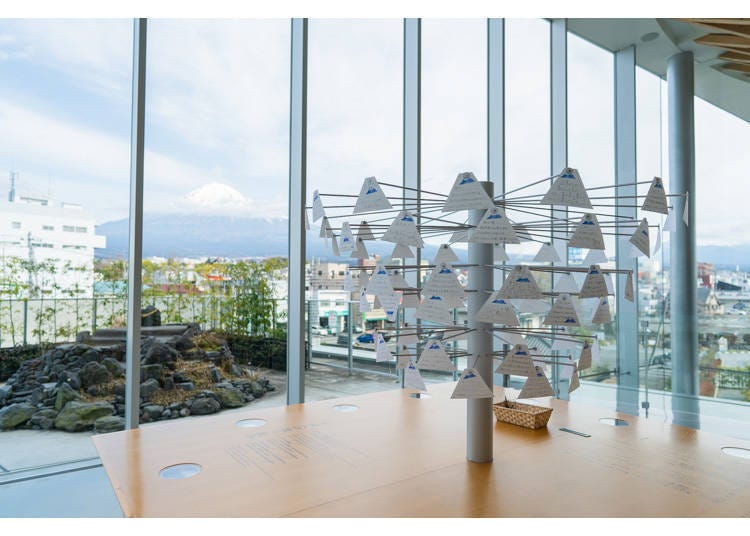
Located opposite The Nurturing Mountain is The Inherited Mountain. This exhibit talks about the tumultuous side of Mt. Fuji when it was an active volcano, how people learned to build livelihoods around it, and some thoughts about how humans should continue co-existing with it in the future, treating it as their inheritance.
By viewing the surface preparation of volcanic ash collected from Mt. Fuji's 1707 eruption on display and investigating the volcanic eruption prediction map, visitors are helped to understand the genuine possibility of the mountain erupting again sometime in the future and the effect this will have on people.
At the message corner, everyone is welcome to leave messages for or about Mt. Fuji, whether personal wishes or words of encouragement. Reading these positive messages has been known to cheer some visitors up, and perhaps you'll be one of them!
If you're visiting, please write down your thoughts about this beautiful mountain here.
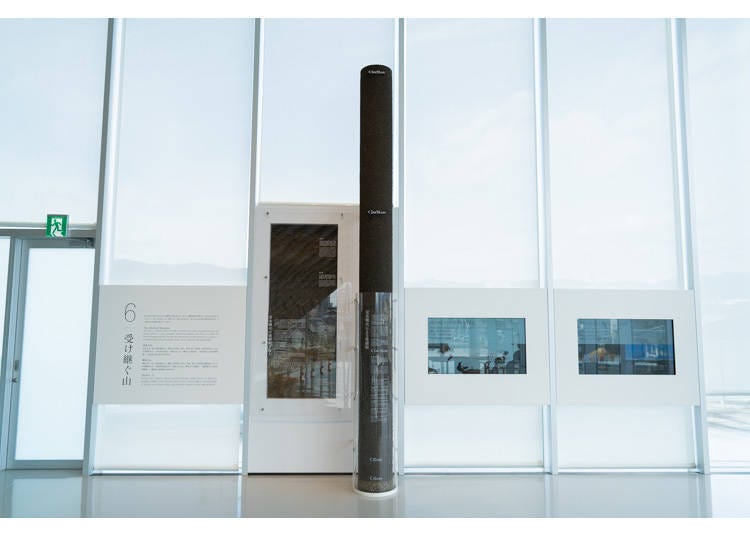
Cafe & Museum Shop: Souvenirs to remember this trip by
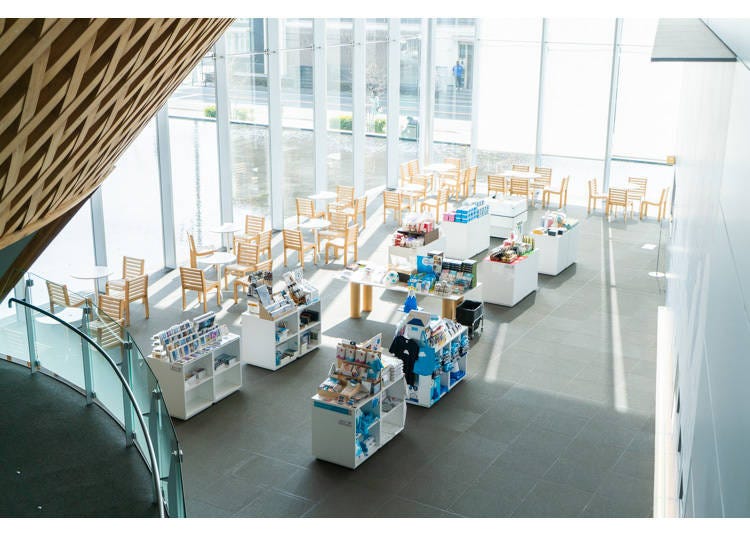
In need of a break in between exhibits in the middle of your tour or perhaps after your tour? Step into the Cafe & Museum Shop on the hall's first floor.
You can order the usual cafe offerings along with special Mt. Fuji-based food items such as Mt. Fuji Soft Serve Ice-Cream "Haru-fuji" or "Lava Ice Bread."
The shop is packed with a great number of souvenirs as well. Again, you'll have access to Mt. Fuji-inspired products like snacks, towels, accessories, and small objects - each one creatively designed.
If something catches your eye, consider bringing it back home as a memoir of your trip here, as well as something to remember Mt. Fuji by. Since the first floor of the exhibition hall is free entry for all, the shop is also free to enter.
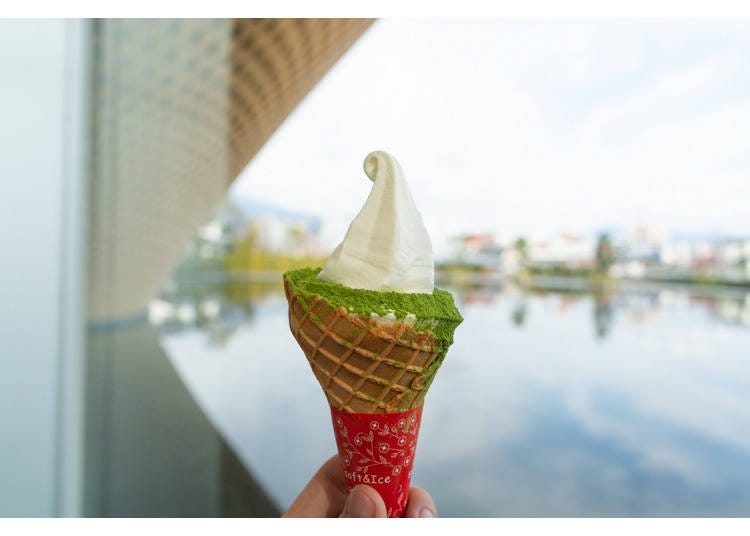
After viewing the exhibits and experiences at Mt. Fuji World Heritage Center, you'll likely feel you've already scaled Mt. Fuji without stepping on it! Your initial image of Mt. Fuji may also change completely after the visit. Enrich your trip to Japan today by better understanding what it is about this Japanese cultural icon that has charmed many the world over!
-
Mt. Fuji World Heritage Center静岡県富士山世界遺産センター
- Address 5-12 Miya-cho, Fujinomiya-shi, Shizuoka-ken 418-0067
-
Nearest Station
8-minute walk from Fujinomiya Station on the JR Minobu Line
45 by bus from Shin-Fuji Station on the JR Shinkansen (take towards Kyukamura Fuji or Fujisan Station and disembark at Mt. Fuji World Heritage Center Bus Stop)
- Phone Number 0544-21-3776
・Hours: 9 AM – 5 PM (9 AM – 6 PM in July and August) *Last entry allowed half an hour before closing)
・Closed: Every third Wednesday of the month, end of year and start of year, facility inspection days
・Admission Fee: 300 yen per person; 200 yen for groups of 20 and above; Free for under 15 y/o, Junior and High school students, University students, seniors above 70, and the disabled (ID required).
Written by: Gaiichirо Yoneyama
*This article was published based on information available in February 2020 and updated in October 2023.
- Area
- Category
*Prices and options mentioned are subject to change.
*Unless stated otherwise, all prices include tax.
Limited time offer: 10% discount coupons available now!
Recommended places for you
-

Kappabashi Street
Old Towns (Shitamachi)
Asakusa
-
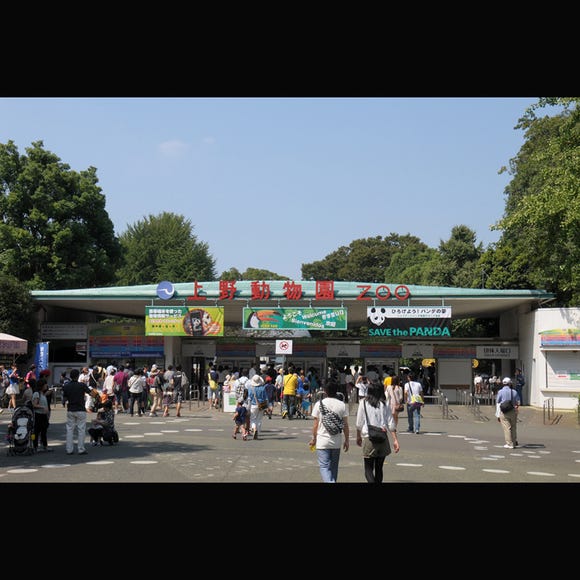
Ueno Zoo (Ueno Zoological Gardens)
Zoos, Aquariums & Botanical Gardens
Ueno
-

Tokyo Metropolitan Government
Landmarks
Shinjuku
-
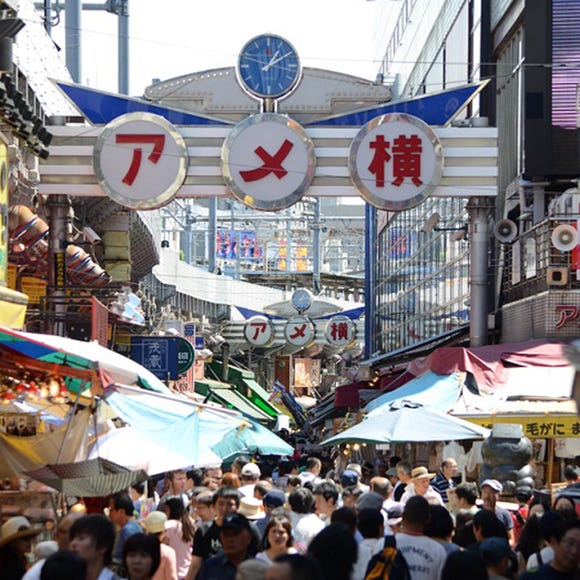
Ameyoko Shopping Street
Old Towns (Shitamachi)
Ueno
-
Events
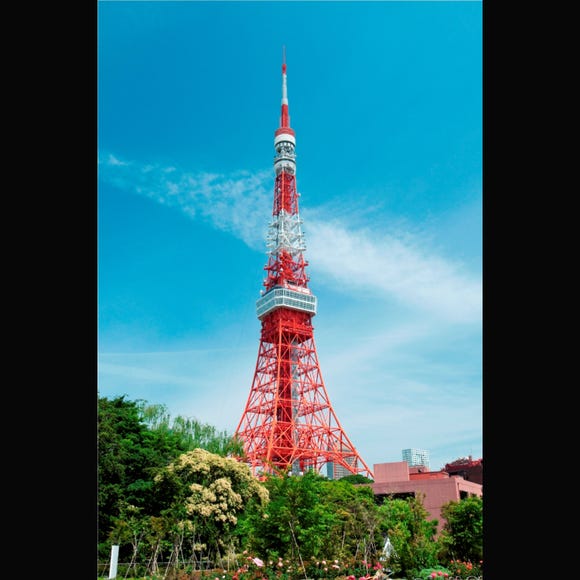
Tokyo Tower
Landmarks
Roppongi
-
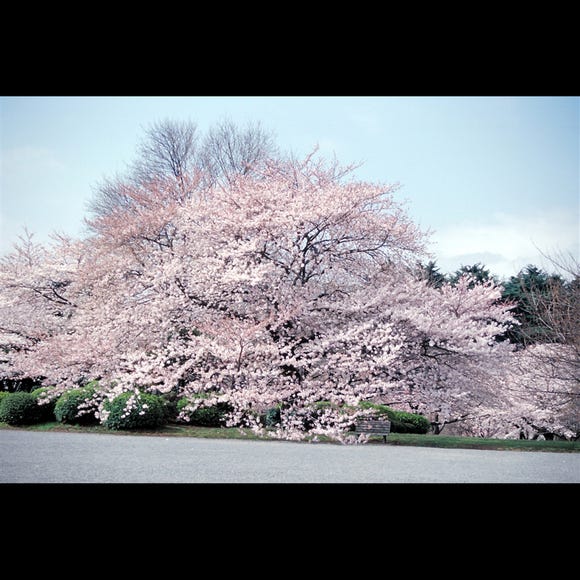
Shinjuku Gyoen National Garden
Gardens
Shinjuku
-

Everything You Need To Know About the Kyoto-Osaka Sightseeing Pass
-

A Complete Guide to the JR West Kansai Area Pass
-

12 Unique & Fun Tokyo Food Tours to Enjoy in 2024
-

The CASIO S100: How CASIO's Masterpiece Calculator Redefines Business Elegance With Japan-Made Reliability
-

15 Must-Try Restaurants in Ikebukuro: From Aged Yakiniku to All-You-Can-Eat Sushi, Plus Adorable Animal Cafés
-

The Complete Guide to the Kintetsu Rail Pass
-
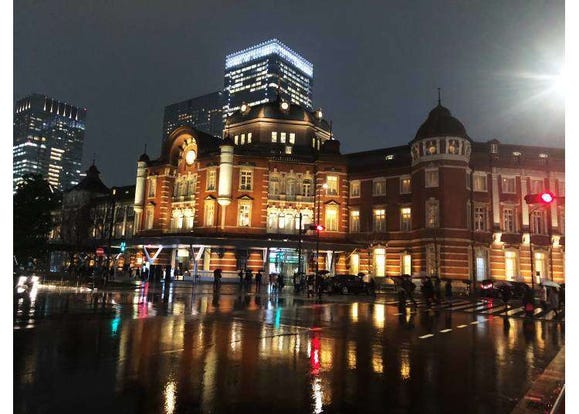
Exploring Tokyo Station: 10 Must-Visit Spots Around the Heart of Tokyo
-

Become a Samurai at the Samurai Museum in Tokyo!
-
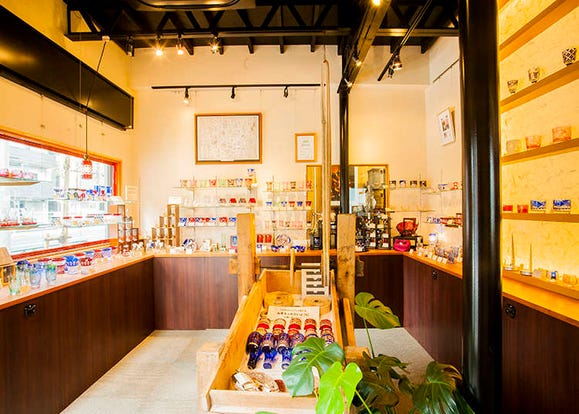
Five Museums Where You Can Enjoy Japanese Culture for Free
-

Tokyo Midtown in Akasaka: The Five Must-Visit Spots
-
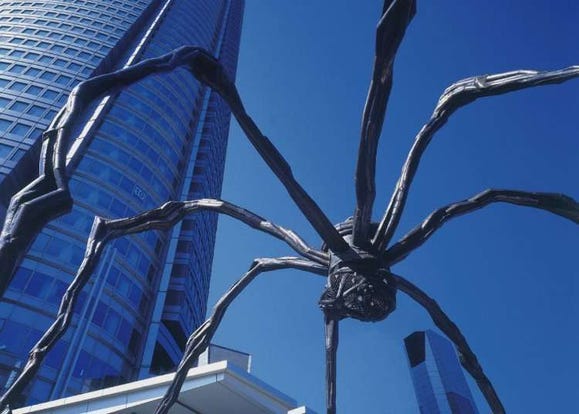
Tokyo Roppongi: 5 Most Amazing Spots at Roppongi Hills and How to Make the Best of Them!
-

Complete Guide to Buying Japanese Medicine in Japan: Phrases and Vocabulary You Need to Know
- #best ramen tokyo
- #what to buy in ameyoko
- #what to bring to japan
- #new years in tokyo
- #best izakaya shinjuku
- #things to do tokyo
- #japanese nail trends
- #what to do in odaiba
- #onsen tattoo friendly tokyo
- #daiso
- #best sushi ginza
- #japanese convenience store snacks
- #best yakiniku shibuya
- #japanese fashion culture
- #best japanese soft drinks














